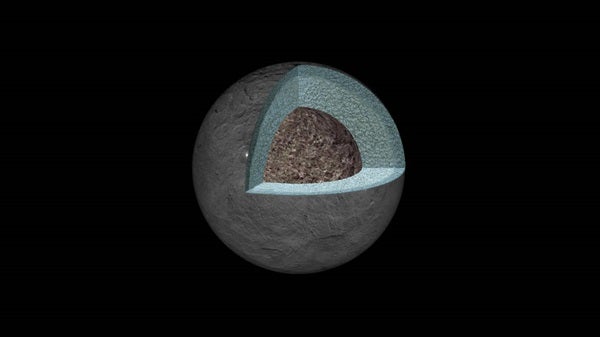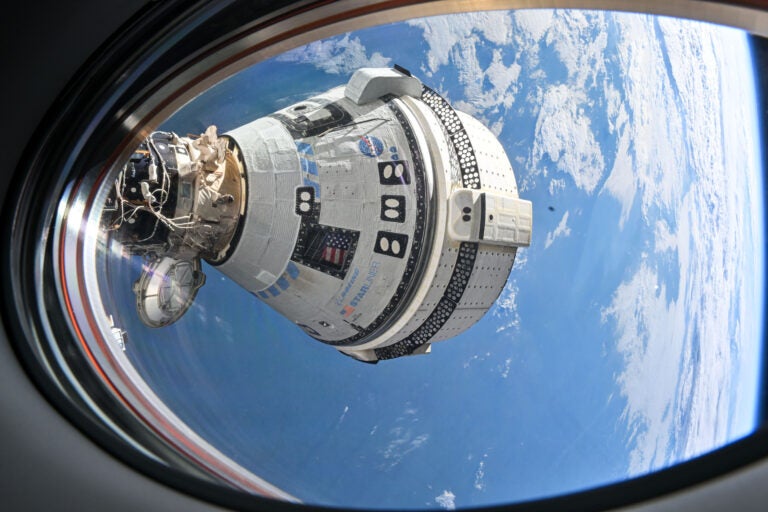Even though the interior of Ceres cannot be seen by the images that NASA’s Dawn spacecraft has taken in orbit around the dwarf planet, Dawn is still a key aspect in determining Ceres’ inner structure.
By tracking subtle changes in Dawn’s motion, scientists can measure the variations in Ceres’ gravity. By using this data, scientists, for the first time,have created a map of Ceres’ gravity and will provided clues to Ceres’ internal structure. The results have been published in the scientific journal Nature.
“The new data suggest that Ceres has a weak interior, and that water and other light materials partially separated from rock during a heating phase early in its history,” says Ryan Park, lead author of the study at NASA’s Jet Propulsion Laboratory, in a press release.
By using NASA’s Deep Space Network (DSN), Dawn measured Ceres’ gravity field by monitoring radio signals sent to Dawn and then received back on Earth. The DSN is comprised of many large antennas at three different locations worldwide that can communicate with interplanetary spacecraft. With these received signals, Dawn’s velocity can be determined to a very small precision of 0.1 millimeters (0.004 inches) per second, which in turn helps the scientists calculate the gravity field on Ceres.
This study confirmed that Ceres possess a special quality called “hydrostatic equilibrium” where Ceres’ interior is so weak that its overall shape is determined by its rotation. The researchers compared Ceres’ shape to its gravity field and found that Ceres was indeed in hydrostatic equilibrium, which often corresponds to roundness. It was because of this that Ceres was classified as a dwarf planet in the first place in 2006.
The data also indicated that Ceres’ interior is differentiated, which means that at different depths, its layers are compositionally different with the most dense layer at the core. Ceres is also much less dense than other bodies in the solar system, such as the moon and asteroid Vesta (Dawn’s previous target). It has been suspected that Ceres also contains low-density materials like water ice, while the study shows that these materials separated from the rocks and rose to the outer layers.
“We have found that the divisions between different layers are less pronounced inside Ceres than the moon and other planets in our solar system,” says Park. “Earth, with its metallic crust, semi-fluid mantle and outer crust, has a more clearly defined structure than Ceres.”
It has also been found that high-elevation areas have displaced the interior. Ceres’ weak mantle can be pushed by the mass of mountains and other high topography on the outermost layer. Similar to a boat floating on the water; the amount of water displaced depends on the boat’s mass. This has been observed on other planets, like Earth, but this study is the first to confirm this phenomenon.
This internal structure can educate researchers on what might have happened to Ceres early on in its life. By combining this new data from Dawn and old data about the dwarf planet’s surface composition, Ceres’ history can be reconstructed.
“We know from previous Dawn studies that there must have been interactions between water and rock inside Ceres,” says Carol Raymond, a co-author of the study and Dawn’s deputy principal investigator at JPL, in a press release. “That, combined with the new density structure, tells us that Ceres experienced a complex thermal history.”










